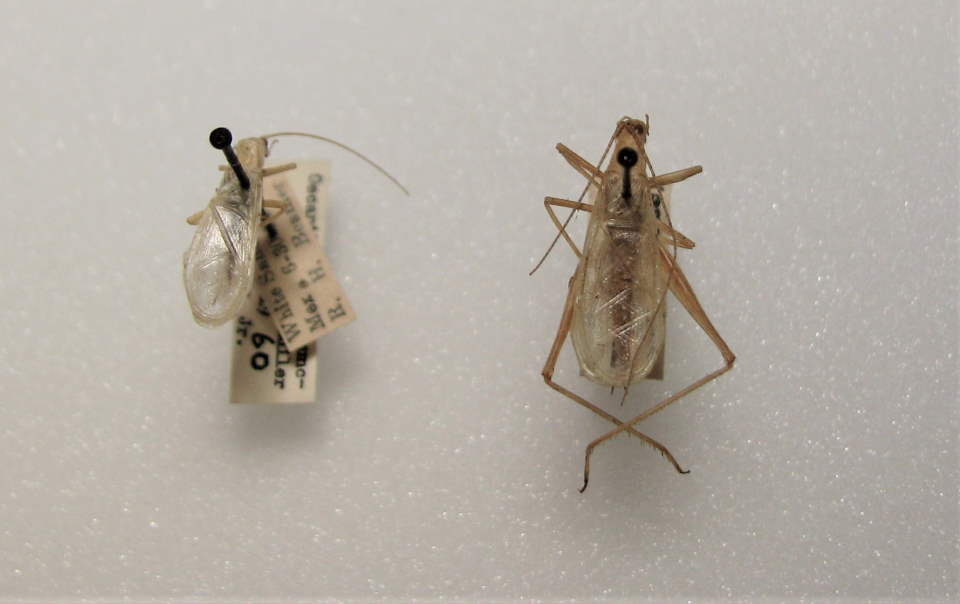




|
Raymond H. Beamer in Alamogordo, New Mexico, 1932.
Photograph, University of Kansas. |
Specimen of O. beameri (left), which is smaller and paler than O. quadripunctatus (right). Photograph from Collins and Lightfoot 2022. |
In 1932 Raymond H. Beamer collected two cricket specimens from White Sands National Park, New Mexico. He placed the specimens in a drawer with O. quadripunctatus at the Academy of Natural Sciences of Drexel University (ANSDU; Philadelphia, PA). In 2019, Nancy Collins, an energetic oecanthine enthusiast, had a 5-hour layover in Philadelphia while traveling from Wisconsin to Ithaca, New York. She took this opportunity to visit the Oecanthinae collection at ANSDU. When Nancy came to the O. quadripunctatus drawer, she noticed a specimen that looked out of place— it was smaller and whiter than the other specimens. She saw from the insect label that it had been collected in White Sands, New Mexico in 1932 by Beamer. She continued to search through the drawer and found another such specimen, also collected by Beamer in 1932. Nancy contacted David Lightfoot, Senior Collection Manager at the Museum of Southwestern Biology in Albuquerque, New Mexico, about the specimens she had found. David continued the investigation, making a trip to White Sands, where he found specimens similar to those outliers at ANSDU. He photographed, recorded, and collected several specimens. After studying the specimens, Nancy and David concluded this was a new species of tree cricket, which they described in Collins and Lightfoot 2022.